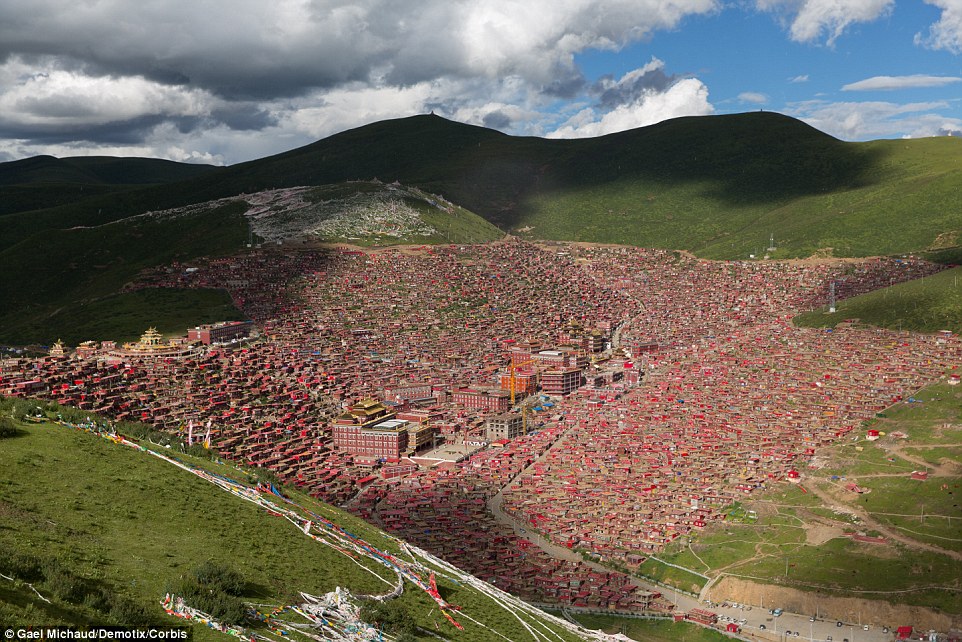The largest Buddhist centre in Tibet is under threat of demolition. Larung Gar Buddhist Academy in the Serta county of Kardze is home to over 10,000 monks, nuns and lay people but may be torn down to comply with China’s new tougher regulations on the number of people one centre can hold.
Orders to massively cut back on numbers have already started with the eviction of residents, sources in Tibet have reported. Authorities have announced that 1,200 nuns and monks must evacuate from the centre this year, 600 of whom have travelled from far-flung regions of Tibet to be there. Around 1,500 houses will also be demolished.
Chinese officials announced that the number of people must be reduced to 5,000 by September 2017, half the number of current residents. At the moment the centre is made up of almost 10,000 nuns, monks and lay people according to official documents obtained by Radio Free Asia’s (RFA) Tibetan service.
“About 60 -70 percent of the houses of monks and nuns are being marked for demolition,” said one RFA source from Tibet, adding that the order to reduce the number of residents in Larung Gar Monastery came from “higher authorities” and not from Serta county officials.
“Halving the size of the population of the historic monastery would leave thousands homeless,” said Human Rights Watch (HRW), based in the United Stated, as it appealed the country to negotiate with the Buddhist community.
“China’s authorities should not be determining the size of monasteries or any other religious institution, but should accept that religious freedom means letting people decide for themselves their religious practices,” said Sophie Richardson, HRW’s China director.
“If authorities somehow believe that the Larung Gar facilities are overcrowded, the answer is simple: allow Tibetans and other Buddhists to build more monasteries,” she said.
Larung Gar, which not only hosts Tibetan devotees but hundreds of ethnic Chinese followers as well, is known for its democratic and equalitarian practices with commitment to gender and ethnic equality, reported Human Rights Watch. Richardson said that the order to demolish it is a step backwards for Chinese religious policy. “By imposing such stringent demands on such a prominent monastery, the government is raising alarms for religious institutions across China,” she added.
The world’s largest Buddhist academy was founded in 1980 by the late Khenpo Jigme Phuntsok who passed away in 2004. It is no stranger to persecution, having been attacked before in 2001. Then, as is likely to happen now, local authorities deployed teams of police who bulldozed most of monk’s and nun’s residences.





 Print
Print Email
Email